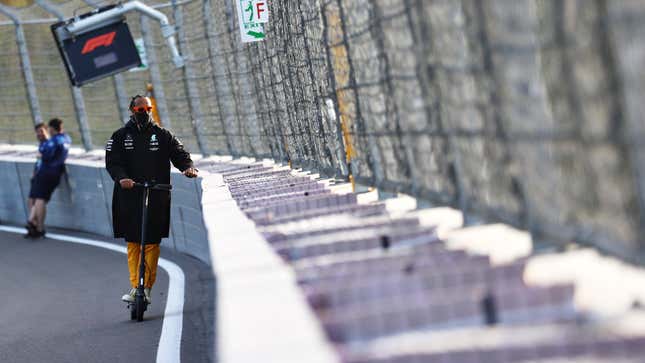
After a year delay due to COVID-19, Formula 1 will finally get to go to Zandvoort this weekend for the Dutch Grand Prix. I anticipate the race will be impossible to watch because of the ever-present orange fog blanketing the track, given that this will technically be Max Verstappen’s first home race. (Verstappen was born in Belgium — so Spa is also kind of his home race — but he races under the Dutch flag. Also, there wasn’t really much racing at Spa last weekend.)
Anyway, Zandvoort is a fantastic circuit and has been for a very long time. F1 fans can be a cynical bunch, though, and the expectation is that although millions of euros were poured into renovating the track, its twisty, narrow nature and short straightaways will make passing an absolute bear — even more than it already is in F1.
The designers tasked with adapting tracks like Zandvoort to modern, high-level racing have a tough job. Leave the track alone, and it might produce an unsatisfying or unsafe race. Go too ambitious with the changes and you’ll break the spirit of the circuit, and destroy what makes it unique — like Silverstone’s transformation in 2010.
Racer’s Chris Medland just published a fascinating interview with Jarno Zafelli, the primary designer behind Zandvoort’s redevelopment. If like me you spent many years of your youth doodling race tracks in class or during your free time, I highly recommend you check it out.
The big change to Zandvoort, aside from widening and the addition of asphalt runoff in some areas (though, crucially, not too many) is the banking installed at the Turn 3 hairpin and the final corner — the long, right-hander Turn 14. Zafelli says the impetus behind these additions was to enhance the track’s organic, undulating character while also allowing drivers to carry more speed into DRS sections:
“They wanted to be sure that we were keeping the roller coaster effect without destroying the track in terms of what they already knew,” Zafelli tells RACER. “The history of the track is that it was carved into the dunes and they didn’t want to create straight lines or hairpins or things that weren’t organic in shape. This was the brief, basically.
“They wanted to keep the roller coaster effect and if possible to empower it, and that’s what we tried to do.”
I won’t give too much of the interview away because it’s worth checking out in full, but it speaks to the delicate line that thoughtful track designers have to walk between honoring a venue’s legacy and modernizing it. That last corner, Arie Luyendyk, was given its 18 degrees of banking so it could be taken flat out with DRS. The FIA apparently has decided against that, though the race organizers are holding out hope that it may flip on that decision, according to Autosport.
Anytime F1 travels to a circuit that isn’t a Hermann Tilke-esque sequence of four-mile straights and single digit-angle corners, naysayers fear the race will be devolve into a monotonous procession. But pandemic-prompted schedule changes demonstrated that F1 can put on thrilling shows at old-school tracks, like Mugello and Imola. I’m holding out hope that we will be able to add Zandvoort to that list after this weekend.